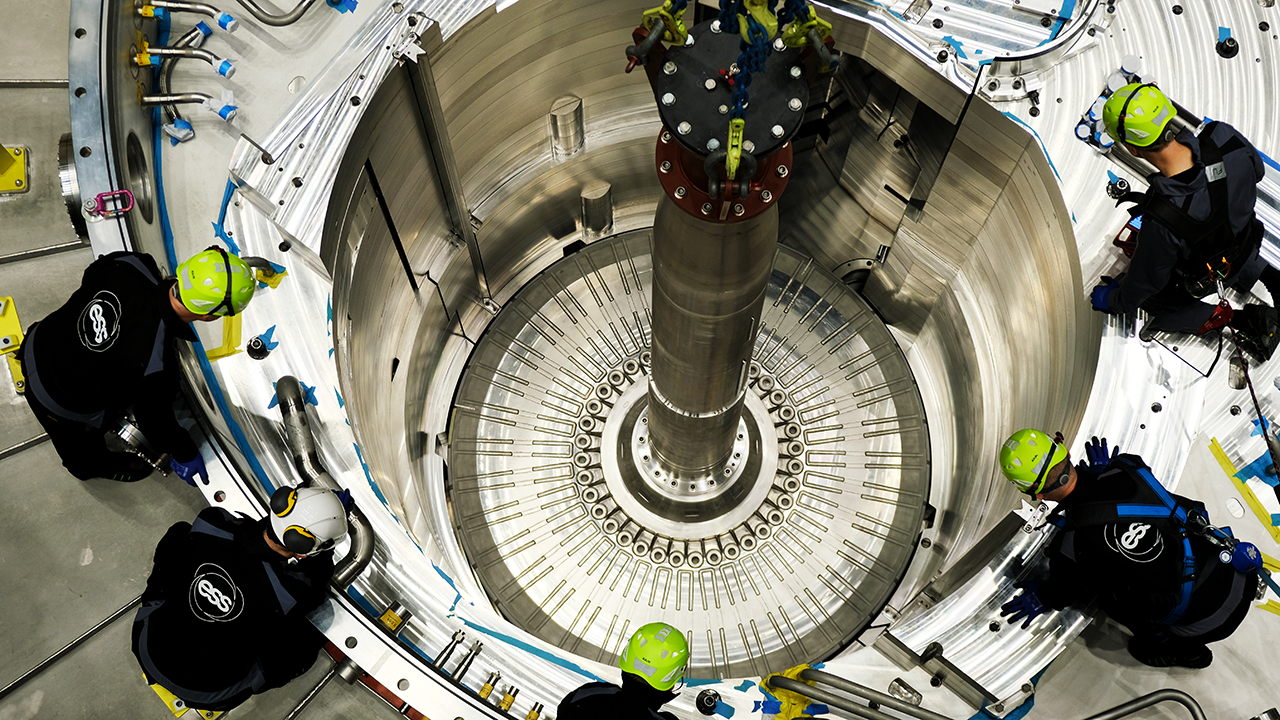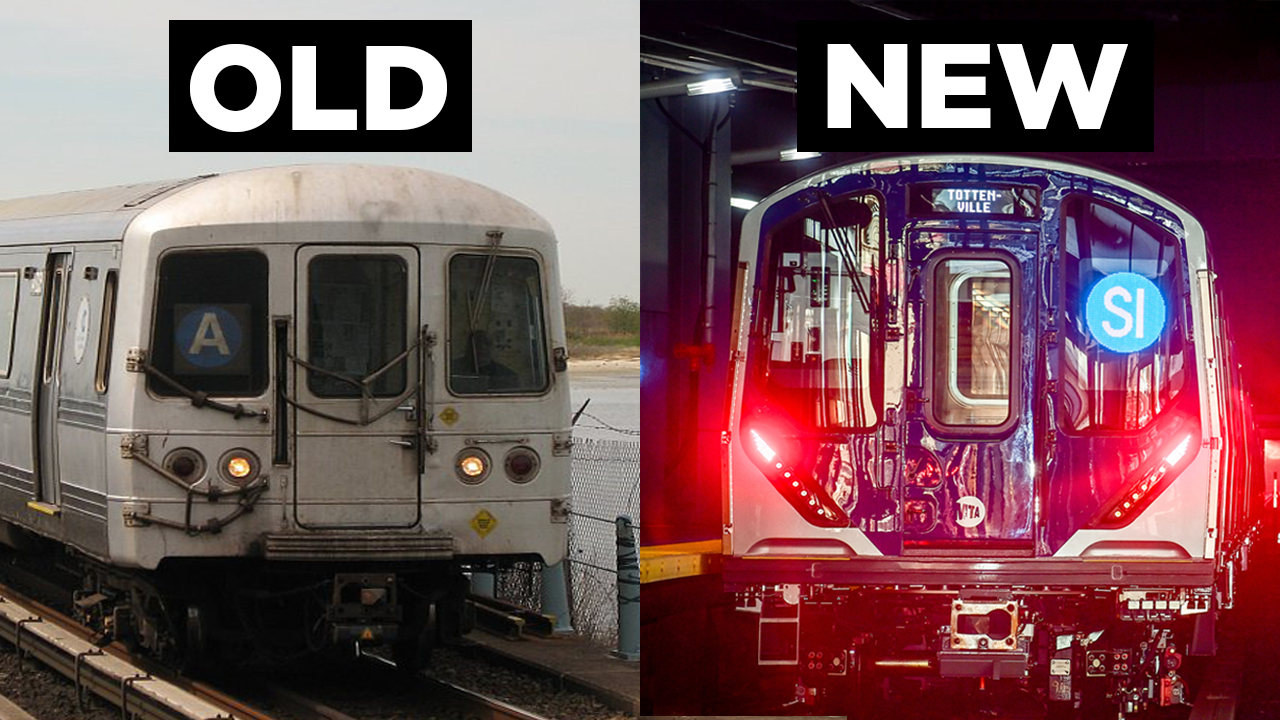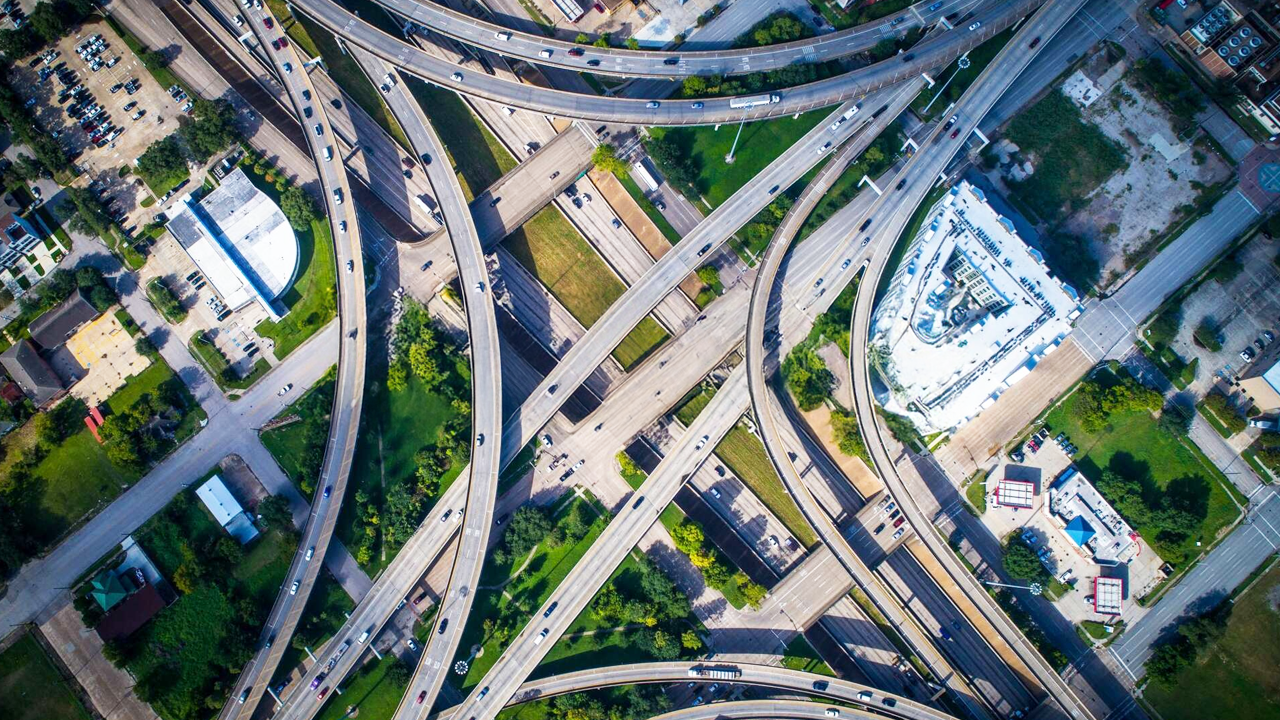The $3BN Plan to Connect Malaysia to Singapore
- Youtube Views 768,767 VIDEO VIEWS
Video presented and narrated by Fred Mills. This video contains paid promotion for Masterworks.
TAKE a look at any map of Southeast Asia and you’ll see that Singapore and Malaysia are pretty close.
Over 350,000 residents travel back and forth between these two countries everyday over the Strait of Johor, the small waterway that divides them.
Only two physical crossings exist, and they’re congested. In fact, these rank as some the busiest land crossings in the world, and that's a problem. Both for Singapore and Malaysia, and the wider region of Southeast Asia.
A journey that should take about 20 minutes here can run to almost four hours for many commuters.
But things are about to change, because Singapore and Malaysia are now building the RTS Link: a brand new $3BN rail crossing that will cut congestion and streamline the immigration process.
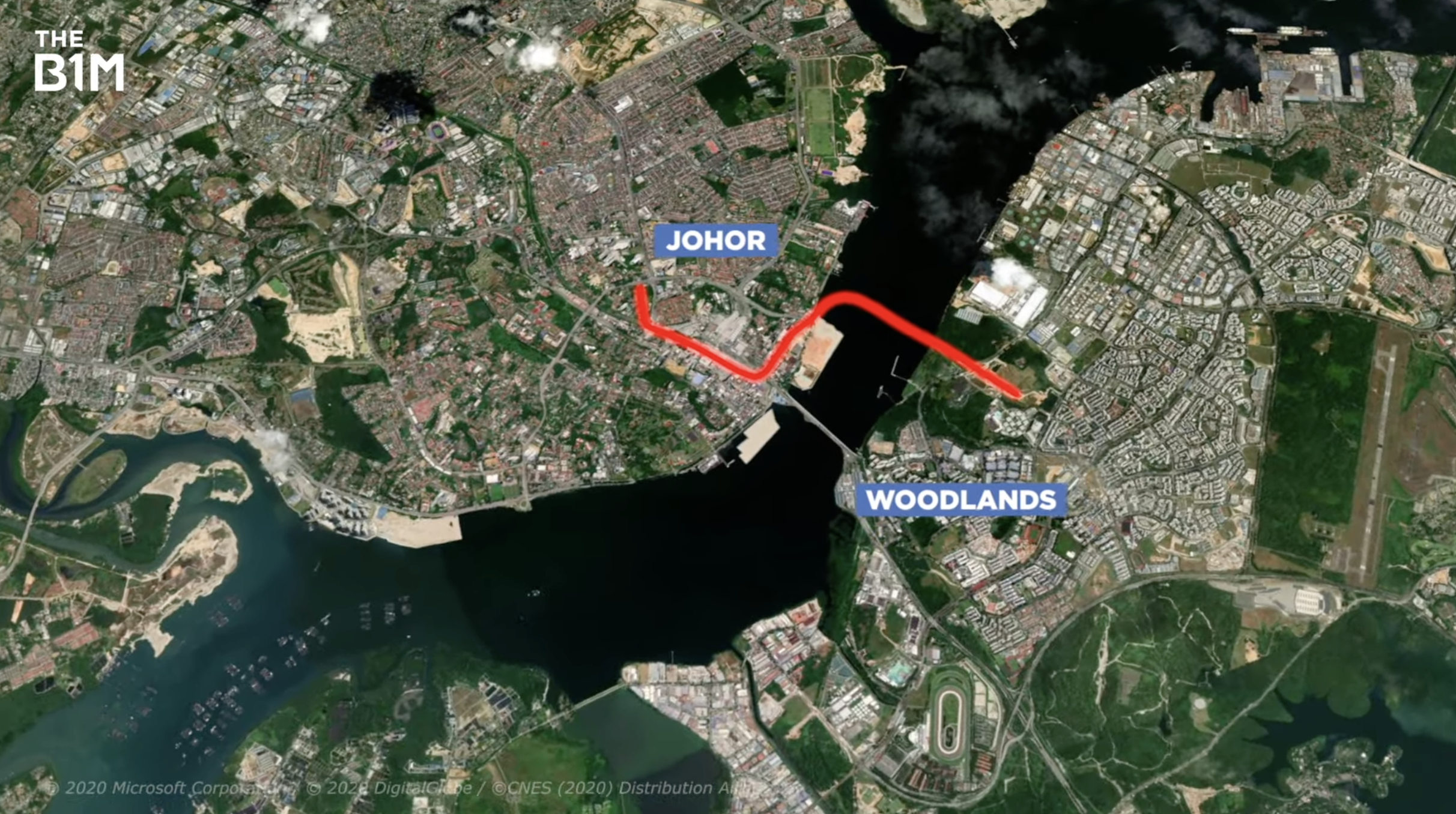
Above and Below: The new RTS Link could transform travel between Singapore and Malaysia, with impacts across Southeast Asia. Image below courtesy of MRT Corp.
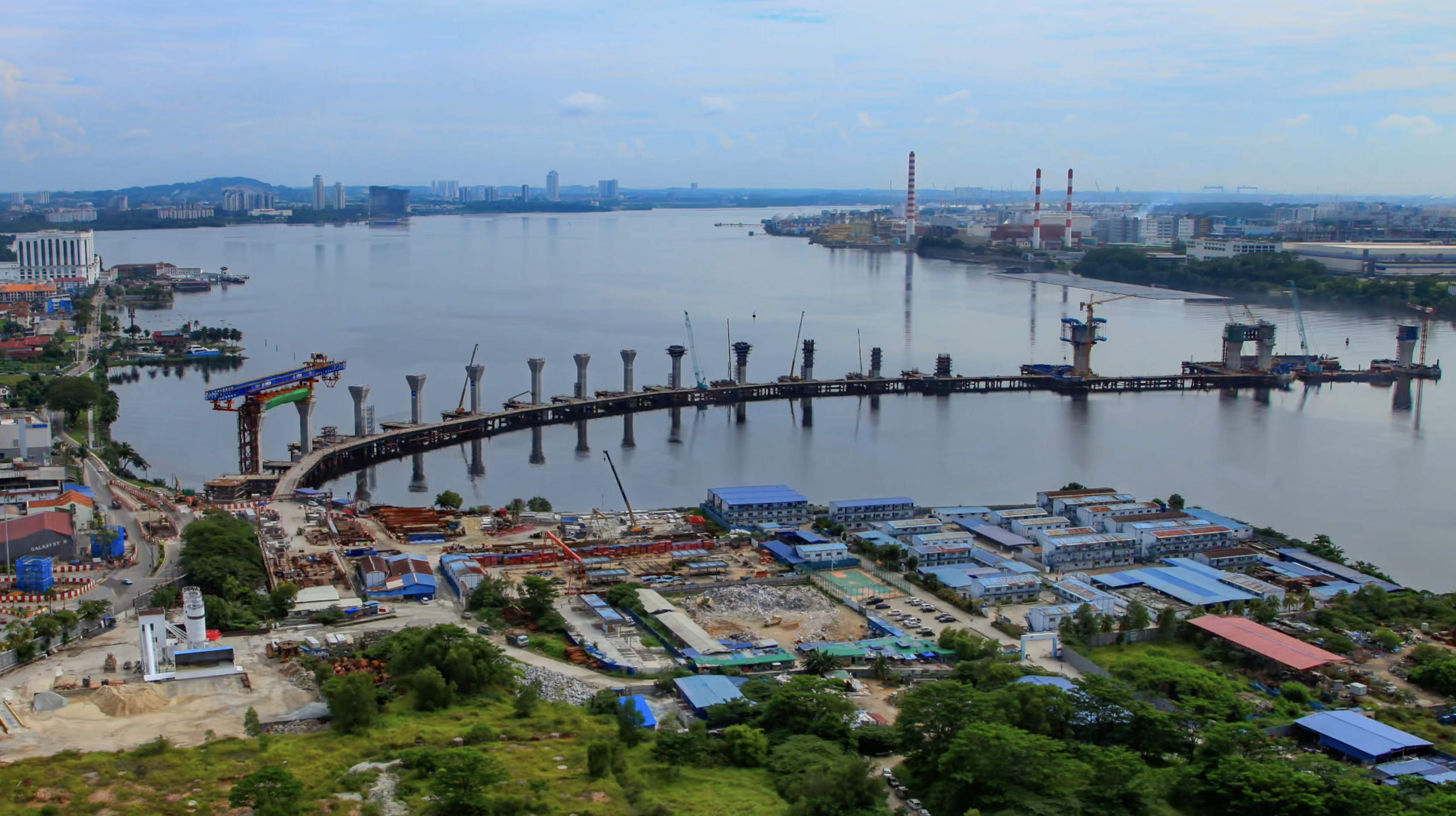
Malaysia and Singapore enjoy a mutually beneficial relationship. Residents often travel between them for work, or to see friends and family, and doing that means using one of two crossings: the Johor–Singapore Causeway or the Malaysia–Singapore Second Link.
The Second link was built to ease congestion on the incredibly busy one-kilometre-long causeway in the 1990s. But today, both are not enough, and frustrated commuters are feeling the effects.
The four-kilometre new RTS rail link that will connect Bukit Chagar in Johor Bahru Malaysia to Woodlands in Singapore across the Strait of Johor.
Touted as a game changer for both countries, the project was first proposed in 2010. But construction initially faced a series of delays and didn’t start chugging along until a decade later. It’s now expected to reach completion by 2026.
At peak capacity, the new RTS Link could carry up to 10,000 passengers every hour. Its trains are due to reach speeds of up to 80 km/h and the journey should take about six minutes in total.
New stations on either side are going to provide single-point immigration with a joint customs system to reduce wait times. That way, commuters will only need to be processed upon entry instead of on both sides of the border.
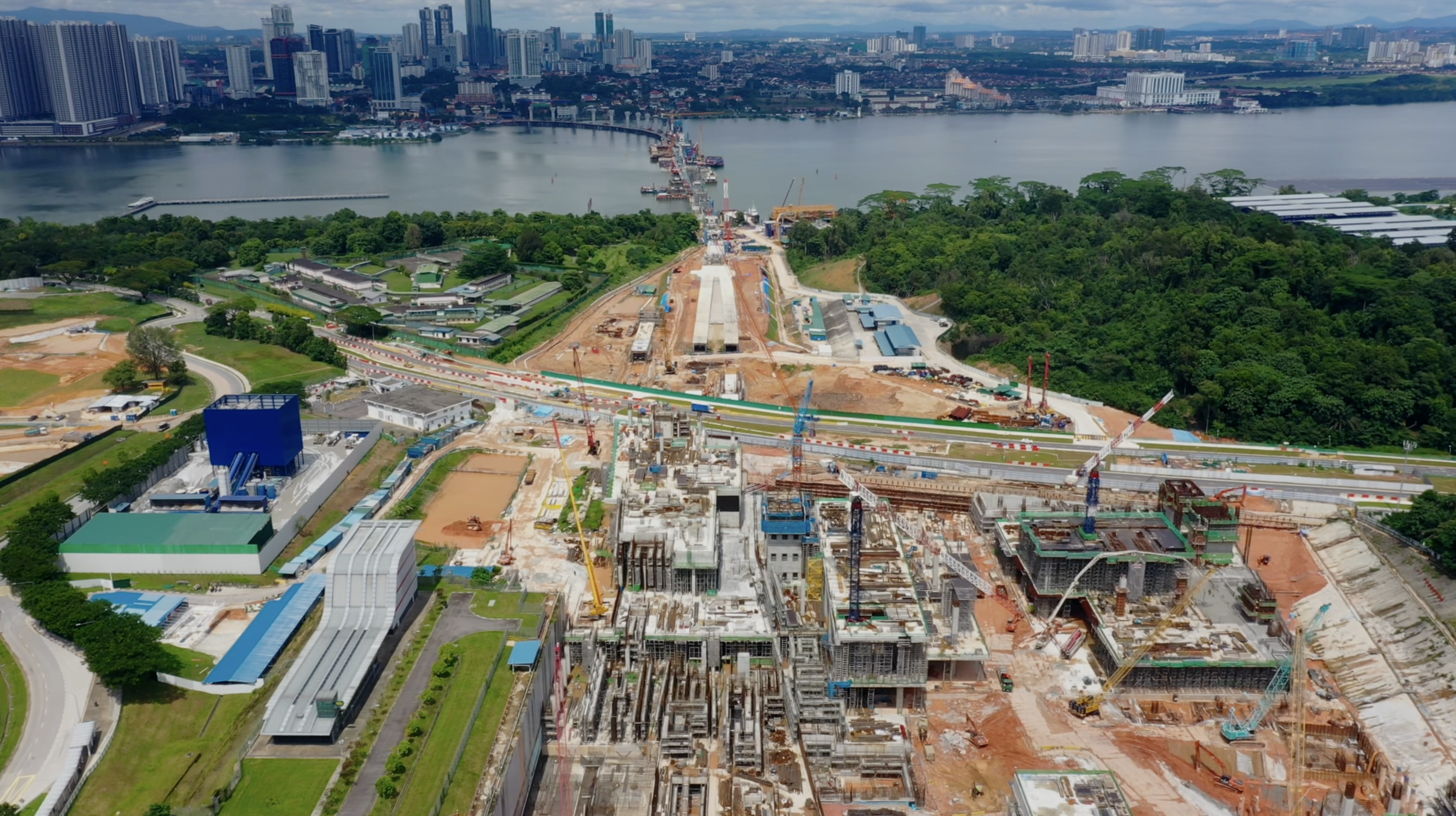
Above: The project has created huge construction sites in two countries, on either side of the Strait. Image courtesy of MRT Corp.
Most of the track is being built up on an 25-metre high overwater viaduct with a short portion routing into an underground tunnel on the Singapore side.
On the Singaporean side, they’re building 12 piers to hold up the country’s 730-metre stretch of the viaduct: three on land, and nine over the water. Altogether, 207 precast concrete segments are being lifted and installed to link the 12 piers, each weighing in around 180 tonnes.
During construction, Singaporean workers accessed these piers by using boats and barges. But over on the Malaysian side, a different method was deployed.
There, workers built a temporary trestle bridge – a type of bridge with short spans supported by frames. That created a walkway allowing them to approach their piers directly.
Then in December 2023, a major milestone on the project was reached.
Workers installed the “drop in span” – a 17.1m concrete structure that connected the Singaporean and Malaysian piers.
The 340-tonne piece was first built on-site and then carefully lowered onto temporary steel bearings that were connecting both piers. Once the span was in place, workers removed the steel structures and installed safety barriers around the edges.
The milestone not only marks a significant accomplishment, but also creates a new symbolic link between the countries.
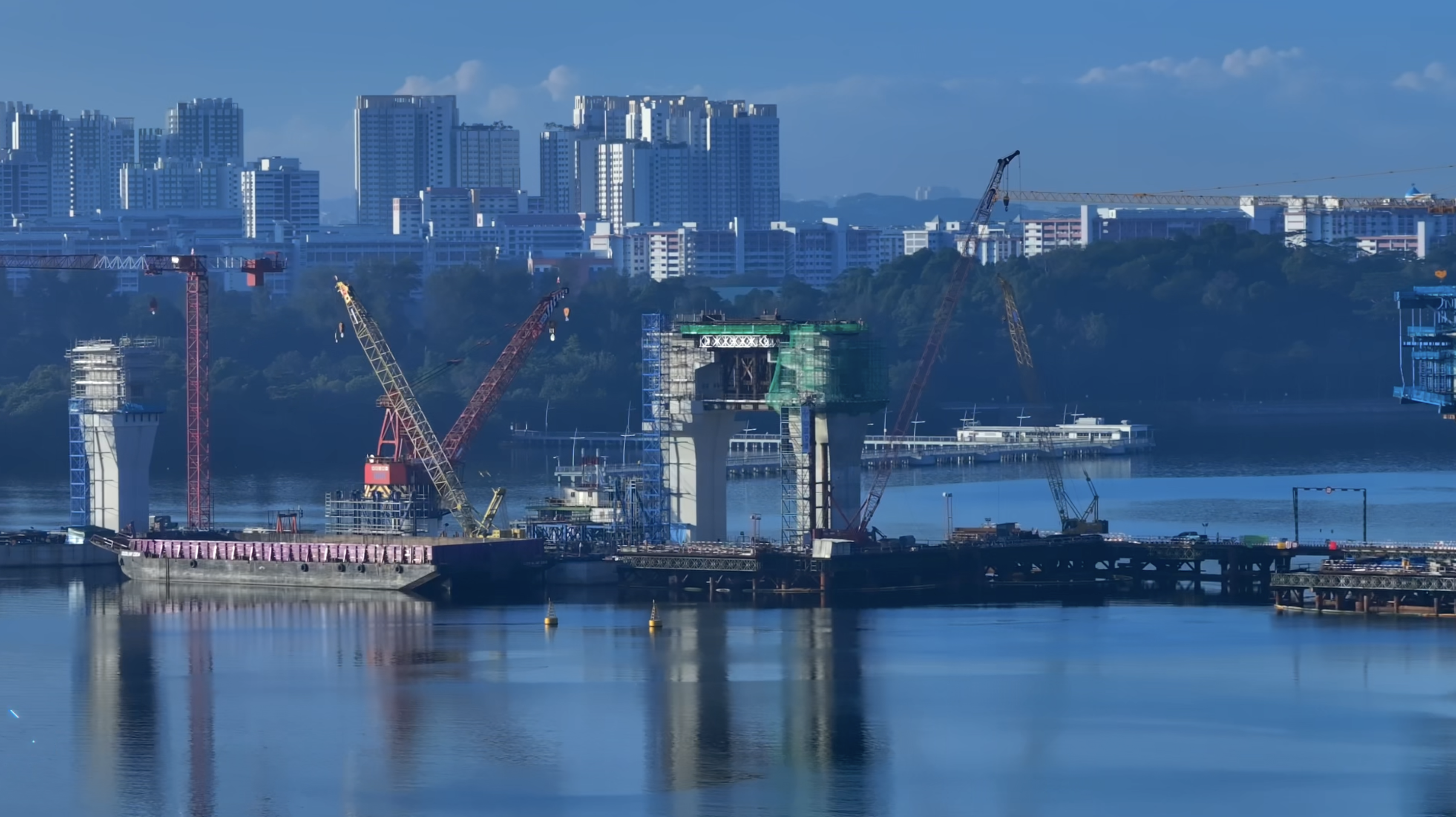
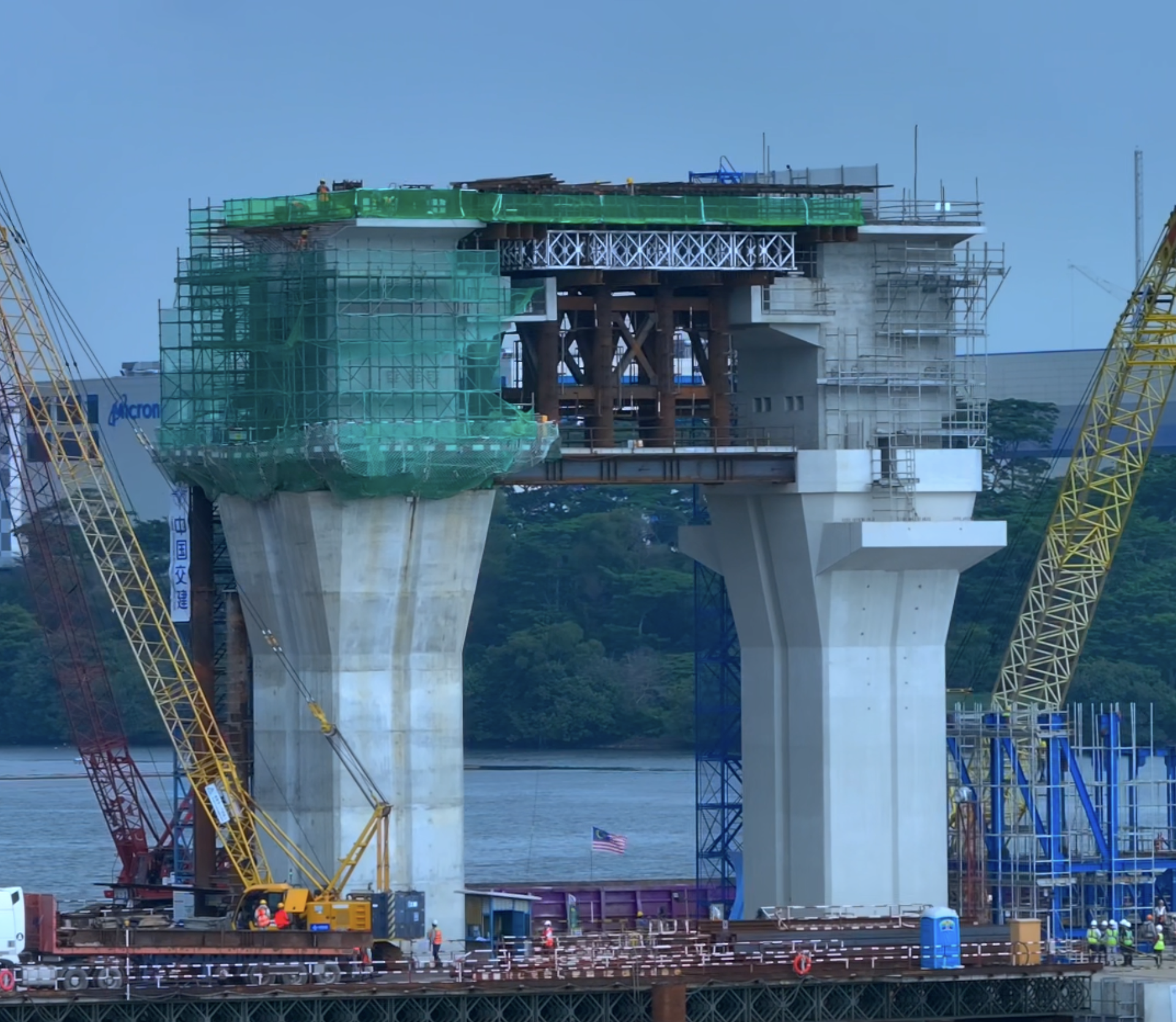
Above: The huge drop in span formed a new link between the two countries. Image courtesy of MRT Corp.
Around 65% of the work is finished on either side so far. When ready, the construction teams will hand off to rail operators who will fit the actual track and car technology.
Once fully operational, authorities predict the new connection could alleviate 35% of congestion on current crossings – and that’s huge for those currently sat in traffic, losing much of their day to their commute.
For many the new RTS Link could indeed prove to be truly revolutionary, ushering in a new era of connectivity and convenience for both Singapore and Malaysia.
